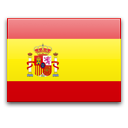Like every Hispanic American urban center, Casco Antiguo was highly interested in its plazas since these were the privileged center for socialization in the city. However, some of the plazas that we can see today were not part of the initial planning of the then-new site for the capital city. These public spaces were not made until after a few fires in the eighteenth century left open spaces within the intramural.
In this blog post, I will be talking about different topics related to the history of the French Plaza of Casco Antiguo and the important buildings in its surroundings.
The French Plaza
The French Plaza is one of the most visited sites of the historic center of Panama City for its remarkable beauty. Initially, the site was known as the Bastion of Chiriquí, and it had a cistern in its central area. Due to the needs of the colonial period, its use contrasts a lot from what it is today, as it was an exclusively military area back then.
In 1920, by law, it was transformed to make way for the installation of a monumental complex. With it, the authorities sought to create a commemorative space to highlight the glory of "pioneers of progress" linked to the construction of the French Canal, in the words of the president of the time, Belisario Porras.

This magnificent monumental complex was built and designed by architect Leonardo Villanueva Meyer at the cost of approximately 35,000 balboas. In 1921, the plaza was inaugurated after the installation of an 18-meter tall obelisk. The monument has a statue of a Gallic rooster on top, a symbol of the French people.
On this site, you can see the busts of those who were in charge of the construction project of the canal during the initiative of the French such as Lucien Bonaparte Wyse, Pedro J. Sosa, and of course, Ferdinand de Lesseps, the project manager.
Going up the stairs to the right of the monument, you will find one of the best-preserved sections of the seaside wall, built to protect Panama City from the attack of pirates and privateers. In time, it would come to be called the Esteban Huertas Walkway. It gained that name after the Colombian general, who in 1903 was a part of and supported the revolution that culminated in the separation of Panama from Colombia when this plaza still had a military presence.
Today, a pedestrian thoroughfare starts in the French Plaza and ends next to the former Union Club. It is a site of singular beauty, where hundreds of visitors walk daily to observe the coast of Panama's capital and buy objects in the craft market.
Under the section of the wall where the promenade is located, you can see some chambers known as the Bovedas. They used to be a prison back in the military days of the plaza. From there, you can see the islands of the Coastway of Amador along with the outline of the modern part of the city, with the imposing buildings in the distance.
Contact me for more information on tours in the Old Town that include the French Square.
References
Castillero Calvo, Alfredo. La Ciudad Imaginada: Historia Social y Urbana del Casco Viejo de Panamá. Editora Novo Art, Panamá, 2014.



Leave a comment